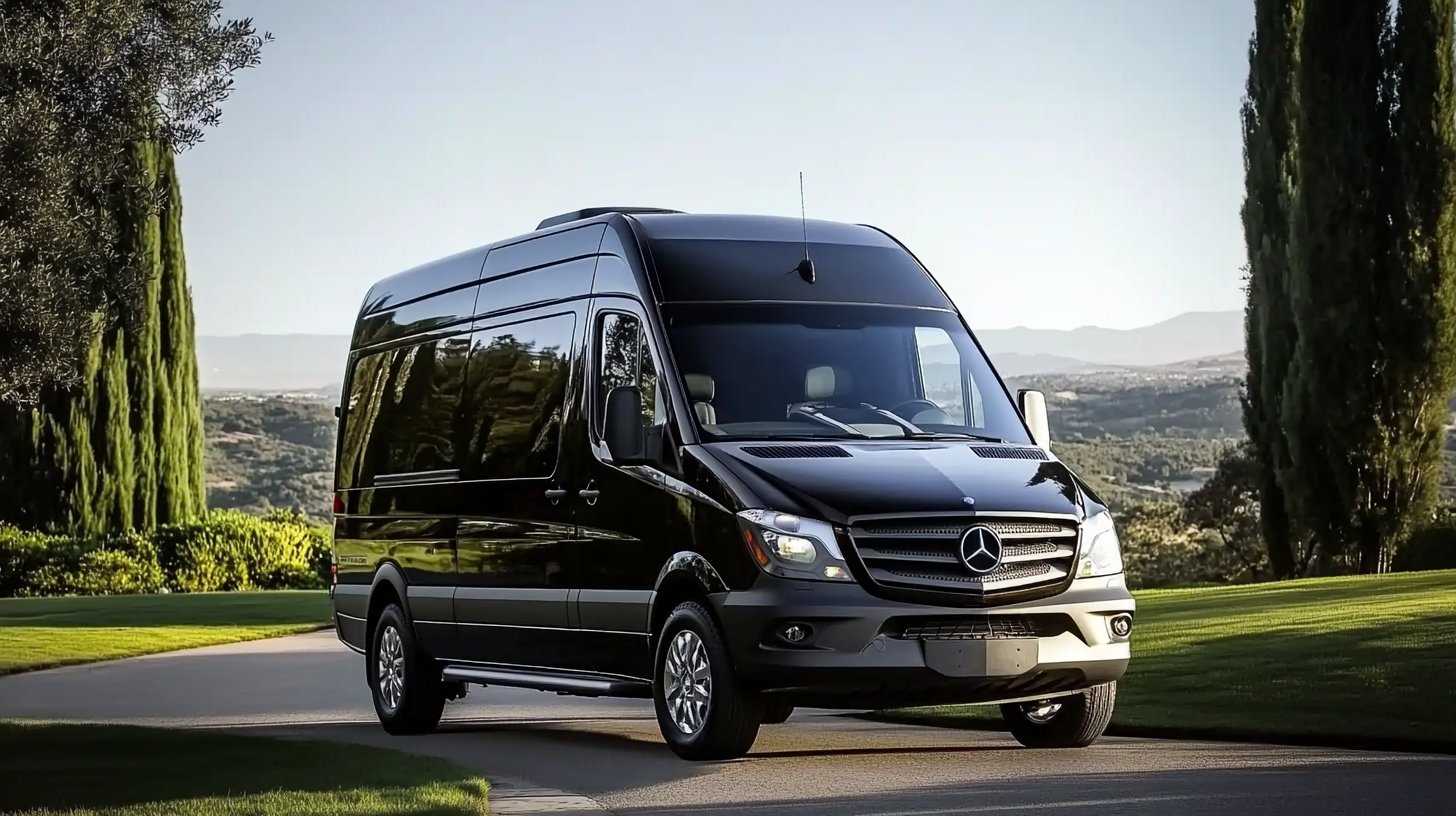10 Digital Tips for Choosing the Best Mobility Vans for Global Buyers
 The global demand for
Mobility Vans has surged over recent years, driven by
an increasing awareness of the importance of accessibility for individuals with disabilities. According to the
World Health Organization, over 1 billion people worldwide
experience some form of disability, highlighting the critical need for specialized transportation
solutions. The mobility vehicle market is projected to reach
$4.5 billion by 2025, indicating a growing trend among
manufacturers and buyers alike to prioritize accessibility. However, selecting the right
Mobility Van can be daunting for global buyers,
considering factors such as custom adaptations, safety features, and pricing. To navigate
this complex landscape, we present ten essential digital tips
designed to empower buyers with the knowledge needed to make informed decisions that cater to their unique mobility requirements.
The global demand for
Mobility Vans has surged over recent years, driven by
an increasing awareness of the importance of accessibility for individuals with disabilities. According to the
World Health Organization, over 1 billion people worldwide
experience some form of disability, highlighting the critical need for specialized transportation
solutions. The mobility vehicle market is projected to reach
$4.5 billion by 2025, indicating a growing trend among
manufacturers and buyers alike to prioritize accessibility. However, selecting the right
Mobility Van can be daunting for global buyers,
considering factors such as custom adaptations, safety features, and pricing. To navigate
this complex landscape, we present ten essential digital tips
designed to empower buyers with the knowledge needed to make informed decisions that cater to their unique mobility requirements.
Understanding Mobility Van Specifications: Key Features to Look For
When selecting the best mobility vans, understanding their specifications is crucial for global buyers. Key features that define optimal performance and usability include ramp type, space configuration, and safety features. According to a 2022 report by the National Mobility Equipment Dealers Association, more than 70% of mobility van users prioritize the ease of access, highlighting the importance of ramp designs that accommodate wheelchair users effectively.

One essential tip is to evaluate the ramp type: whether it's a fold-out or in-floor ramp can significantly affect user experience. In-floor ramps are often preferred for their convenience and safety, providing seamless entry and exit. Another consideration is the interior space configuration—for instance, a larger turning radius allows for easier maneuverability for both users and caregivers. Moreover, safety features such as reinforced door locks and secure tie-downs should be non-negotiable aspects of your decision-making process.
It's also advisable to look into the power and drivetrain options of the mobility van. An accessible van with better fuel efficiency not only offers long-term savings but also ensures a smoother driving experience. As reported by the Association for Safe International Road Travel, overall safety ratings can greatly impact the choice of mobility vehicles, making it essential to research models that have received high ratings in crash tests.
Market Trends in Mobility Vans: A Data-Driven Overview for Global Buyers
Mobility vans have become an essential mode of transportation for individuals with disabilities and their caregivers. Understanding the market trends is crucial for global buyers looking to make informed decisions. In recent years, data shows a rise in demand for customizable and accessible vehicles, influenced by increased awareness of inclusivity and accessibility initiatives. Manufacturers are responding by developing more diverse models that cater to a wide range of mobility needs, ensuring that buyers have options that align with their specific requirements.
Moreover, technological advancements in mobility vans have significantly impacted buyer preferences. Features such as automated ramps, advanced safety systems, and smart technology integrations are becoming standard. Data indicates that buyers prioritize these innovations, seeking vehicles that enhance the driving experience while ensuring comfort and safety. Additionally, sustainability trends are influencing purchasing choices, with a growing number of buyers leaning towards electric and hybrid mobility vans. This reflects a broader shift in consumer behavior, where eco-friendliness and efficiency are paramount considerations in the selection process.

Evaluating Safety Standards: What Data Says About Mobility Van Safety Ratings
Evaluating safety standards is crucial for global buyers considering mobility vans. When selecting a van, understanding the safety ratings can make a significant difference in ensuring the well-being of passengers. Government agencies and independent organizations conduct rigorous tests to evaluate various aspects of vehicle safety, including crashworthiness, stability, and features designed to protect occupants with mobility challenges. Buyers should consult the latest safety ratings from sources like the National Highway Traffic Safety Administration (NHTSA) or the Insurance Institute for Highway Safety (IIHS) to get a comprehensive view of how different models perform in real-world scenarios.
Additionally, it's essential to delve into specific features that enhance safety for those with mobility needs. Look for vans equipped with advanced safety technologies, such as automatic emergency braking, blind-spot monitoring, and adaptive cruise control. These features can provide added reassurance, especially when transporting individuals who may have difficulty reacting quickly in emergency situations. By prioritizing safety ratings and modern safety features, buyers can make informed decisions that not only enhance mobility but also ensure the highest level of protection for passengers.
Top Manufacturers in the Mobility Van Industry: Insights and Comparisons
When considering the best mobility vans on the market, understanding the top manufacturers is essential for making an informed decision. Key players like BraunAbility and VMI have established themselves as leaders in the industry, known for their innovative designs and commitment to quality. BraunAbility, for instance, offers a wide range of models that cater to different needs, emphasizing both accessibility and user-friendliness. Their vans are equipped with advanced safety features, ensuring peace of mind for buyers looking for reliable options.
On the other hand, VMI focuses on creating versatile and customizable vehicles that meet diverse requirements. With their innovative ramp systems and spacious interiors, VMI vans are designed to provide maximum comfort and accessibility. Additionally, manufacturers like Legendre offer unique alternatives with their stylish designs and eco-friendly options. As global buyers navigate the mobility van market, comparing these manufacturers based on their specific features, pricing, and warranty offerings will aid in finding the perfect match. Understanding these differences can greatly enhance the buying experience, ensuring that the selected van meets both functional and aesthetic needs.
Cost Analysis: Balancing Price and Quality in Mobility Van Selections
When selecting a mobility van, a careful cost analysis is crucial for global buyers looking to balance price and quality. According to a report by the National Mobility Equipment Dealers Association (NMEDA), the average cost of a new wheelchair-accessible van can range from $30,000 to $70,000, heavily dependent on the model and the level of customization required. Buyers must consider not only the upfront costs but also long-term expenses related to maintenance, fuel efficiency, and potential resale value. A study from the University of Rehabilitation revealed that while more expensive models tend to offer better durability and reliability, cheaper options might lead to increased repair costs over time, negating the initial savings.
In addition to outright pricing, buyers should evaluate the quality of features such as ramp systems, accessibility options, and overall vehicle performance. The Consumer Reports survey indicated that mobility vans with advanced safety technologies, despite being pricier, significantly reduce the likelihood of accidents and injuries. These features can contribute to a lower total cost of ownership through decreased insurance premiums and medical expenses. Ultimately, thorough cost analysis should encompass not only the sticker price but also the overall value provided by the vehicle in terms of lifespan, safety, and user satisfaction.
10 Digital Tips for Choosing the Best Mobility Vans for Global Buyers - Cost Analysis: Balancing Price and Quality in Mobility Van Selections
| Tip Number |
Tip Description |
Price Range (USD) |
Quality Rating (1-5) |
Potential Buyers (Global Regions) |
| 1 |
Assess the vehicle's accessibility features |
25,000 - 60,000 |
4 |
North America, Europe |
| 2 |
Evaluate the fuel efficiency |
30,000 - 50,000 |
5 |
Asia, Australia |
| 3 |
Consider the warranty and after-sales service |
20,000 - 55,000 |
4 |
Europe, North America |
| 4 |
Research safety ratings and features |
35,000 - 70,000 |
5 |
Global |
| 5 |
Check the customization options available |
28,000 - 65,000 |
4 |
Asia, Europe |
| 6 |
Get feedback from current owners |
22,000 - 50,000 |
3 |
North America, Australia |
| 7 |
Compare financing options |
30,000 - 75,000 |
4 |
Global |
| 8 |
Investigate available tax incentives or rebates |
30,000 - 70,000 |
5 |
Europe, North America |
| 9 |
Investigate different van manufacturers |
25,000 - 80,000 |
4 |
Global |
| 10 |
Understand the resale value |
20,000 - 55,000 |
3 |
Africa, Asia |
